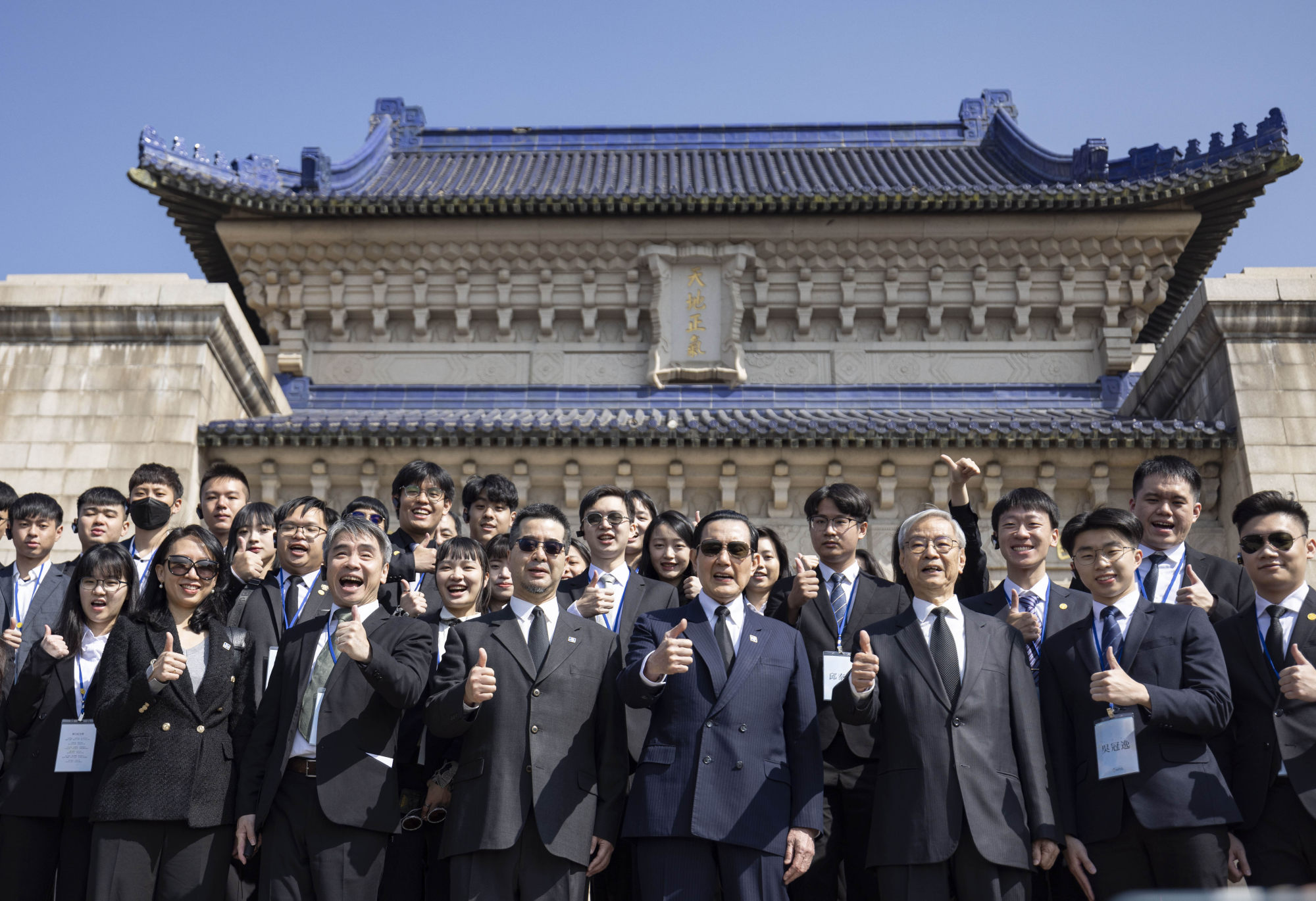
Ex-Taiwan leader Ma Ying-jeou starts ‘journey of peace’ in mainland China
- Ma is leading a group of students on his second visit in a year, amid rising cross-strait tensions
- He will reportedly meet President Xi Jinping next week, but neither side has confirmed the meeting
On Monday, Hsiao Hsu-tsen, executive director of the Ma Ying-jeou Foundation, said Ma hoped to meet his “old friend” Xi, but it was “up to the arrangement of the mainland side”.
Before he left for Shenzhen on Monday, Ma told reporters at the airport that his trip would be “a journey of peace and a journey of friendship”.
“In the face of the increasingly tense situation in the Taiwan Strait, I hope we can convey the sentiments of the Taiwanese people that they love peace, hope for cross-strait exchanges and hope to avoid war,” said Ma, who is leading a group of 20 students on the tour.
Ma said that – as he did last year when he led 50 students on a trip to the mainland – he aimed to promote youth exchanges between the two sides as he believed such interaction could help to “reduce cross-strait hostility and accumulate goodwill”.
The group was met by senior officials from the Taiwan Affairs Office at Shenzhen airport on Monday afternoon.
Ma later met TAO chief Song Tao at an evening reception at Wuzhou Guest House, state news agency Xinhua reported. Song passed on greetings from Xi and said compatriots from the two sides of the Taiwan Strait were all Chinese and should “firmly oppose Taiwan independence separatist activities and external interference”.
“People from across the strait should actively promote exchanges and cooperation in various areas … enhance kinship … and boost peaceful and integrated development of cross-strait relations,” Song said, adding the two sides should also strive for “national reunification and rejuvenation”.
Ma thanked Xi for his greetings and called for more exchanges and cooperation, according to the report.
Max Lo, executive director of the Taiwan International Strategic Study Society think tank, said the meeting with Song on the first day of Ma’s trip suggested his visit was being given “more weight” by Beijing than last year, when they met on the fourth day.
Lo said that was likely because Beijing hoped Ma could serve as a bridge to ease rising tensions with Taipei.
10 years on, Taiwan’s Sunflower Movement has wilted but its legacy lingers on
Chang Wu-ueh, a professor of China studies at Tamkang University in New Taipei City, said Beijing needed a platform to promote its cross-strait policies.
“Ma is a suitable platform after Lien Chan gradually retires from the political scene,” he said.
Lien, a former vice-president of Taiwan and former KMT chairman, made a landmark “journey of peace” to the mainland in 2005 that helped form a communication channel between Beijing and the Kuomintang.
“Ma’s visit should be able to help develop peaceful cross-strait relations in a certain way,” Chang said, adding that this was needed for Beijing to pacify the hawkish voices in mainland China.
Xi has said that Beijing’s “reunification” with Taiwan is inevitable but the preference is to achieve this peacefully. However there have been calls among the hawks in mainland China to retake the island by force.
Beijing sees the self-ruled island as part of its territory to be brought under mainland control and has never renounced the use of force to do so. Most countries, including the United States, do not recognise Taiwan as independent but are opposed to any unilateral change of the cross-strait status quo by force.

Hostility worsened after the deaths in February of two mainland Chinese fishermen whose boat capsized as they fled the Taiwanese coastguard near the Taiwan-controlled island of Quemoy, or Kinmen.
Beijing accused the Taiwanese coastguard of using “violent and dangerous methods” in their pursuit, while Taipei said they had been enforcing the law by asking the fishermen to stop for an inspection.
Taiwan’s concerns grow over Quemoy waters as Beijing steps up patrols
In Shenzhen on Monday, Ma also visited camera drone maker DJI Technology and Tencent, the world’s largest video game company and operator of the WeChat messaging platform.
Ma will spend three days in Guangdong province, where he will pay respects at the Huanghuagang Martyr Cemetery and visit Sun Yat-sen’s former residence and the site of the Whampoa Military Academy.
The group will also visit Sun Yat-sen University for exchanges with students and staff, according to a schedule released by Ma’s office.
They will travel to Shaanxi province on Wednesday, taking part in events including the Ching Ming Festival memorial ceremony for the Yellow Emperor and visiting Emperor Qinshihhuang’s mausoleum and other historical sites.
The group is due to arrive in Beijing on Sunday and will visit Peking University, the Great Wall, the Forbidden City, Marco Polo Bridge and Museum of the War of Chinese People’s Resistance Against Japanese Aggression.

